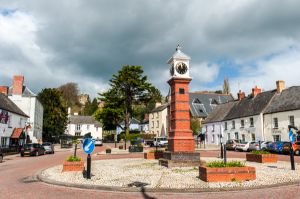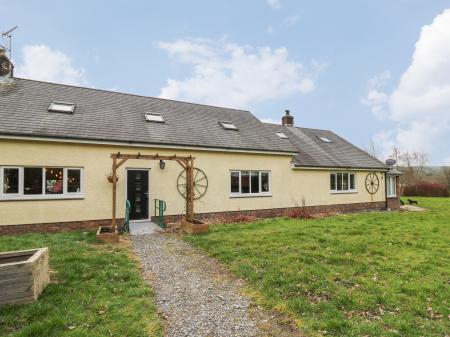
History
The link between Usk and the Romans was first established by Elizabethan antiquarian William Camden. The first excavations did not take place until the 1960s, when traces of an early fort were found to the south of the town centre.
The fort was probably built by the 20th Legion, under the command of Aulus Didius Gallus, as a base for the Roman military conquest of south Wales. The fort was about 48 acres in area, defended by a rampart of clay and turf reinforced with timber. A walkway was built on top of the wall, and towers erected at intervals along the wall, with a gateway halfway along each side. Outside the wall was a V-shaped ditch.
More excavations revealed a pair of timber granaries, an officer's house, and a workshop. An auxiliary cavalry regiment may have been stationed at Burrium along with the 20th Legion, and there was a small civilian settlement beside the fort. Around AD 66 the legion was transferred to Wroxeter, and Usk was held by a small 'caretaker' garrison.
In AD 74-5 a new fort was built at nearby Caerleon. This new fort was easier to supply by sea, and less prone to flooding, but even then the Usk fortress was not completely abandoned, for a small auxiliary fort or depot was established.
The fort was abandoned as a military site by the end of the 1st century, but the depot remained in use for longer. The Romans seem to have intentionally destroyed most of the fort when they left, and since much of it was built of timber those remains would have been scanty in any case.
The fort site was covered over after excavations were complete, and as a result no evidence of the fort can be seen above ground, and the best way to actually get a sense of what the fort was like and how the Romans lived here is to visit the National Roman Legion Museum at Caerleon, which holds finds from the Usk fort.
 We've 'tagged' this attraction information to help you find related historic attractions and learn more about major time periods mentioned.
We've 'tagged' this attraction information to help you find related historic attractions and learn more about major time periods mentioned.




